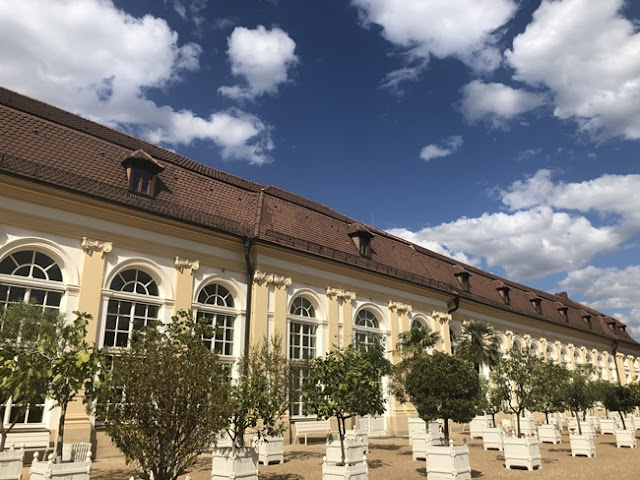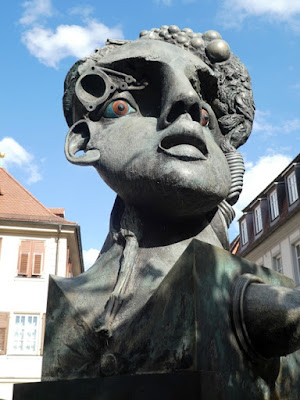Ansbach
After a nice half day in Marktbreit, we headed further to Ansbach.
Can you guess what the first thing my friend's mother, Berta, was looking after?
Toilet? No!
Boutique? No!
Supermarket? No!
It's German cream cheesecake at the Orangerie. The nice afternoon tea break provided energy for the next hours to visit the elegant town, well known for Franconian Rococo.
Ansbach is the commercial and administrative centre for the Middle Franconia region. One of its magnetic attributes is the colourful assortment of townhouses and noble houses. The enticing old town is dotted with modern sculptures. It adds fun to the administrative centre. Apart from art, Ansbach also has dedication to music. The Bachwoche Ansbach (Ansbach Bach Week) is a biennial music festival in Ansbach, dedicated to the life and works of Johann Sebastian Bach, held since 1947.
The most notable and important historical building in Ansbach is the Palace of the Margraves (1713–32), with a fine park. The Margrave’s Palace (Markgrafenschloß) or Residenz Ansbach (Ansbach Residence) was remodeled to Renaissance style in 16th century and used as the Palace of the ruling Margraves of Brandenburg-Ansbach. The building is now used for the Central Franconian government, but 27 state apartments are still open to visitors as part of a guided tour. Rooms include:
Grand Hall - impressive ceiling fresco
Mirror Cabinet - collection of Meißen porcelain
Gothic Hall - high-quality porcelain and Fayence
We did not have time for the interior of the palace but looking around it. Some interesting modern sculptures are presented in front of the baroque facades. The “Anscavallo” (1993) is a famous horse sculpture (by Jürgen Goertz representing Ansbach’s riding tradition), “Ansbacchantin” (a wine-drinking woman of Ansbach) whose wheels symbolizes the pulse of the traffic and flying ducks on top of 2 bus shelters.
The Orangery is a large baroque style park, part of the court park (Hofgarten). It was severely damaged during World War II and reconstructed including a herb garden with many medicinal plants. It is very pleasant to walk around to appreciate the beauty and design.
One will not miss St. Gumbertus Church, It is among the top sights of Ansbach. It was remodeled a few times. Different architectural styles are present. The oldest part is the crypt (around 1040), the pantheon of the Margraves of Ansbach and the only surviving parts of the original church. The choir was transformed in the 16th century to a chapel Schwanenritterkapelle (Swan Knights Chapel), housing "elaborate epitaphs and death shields of members of the Order of the Swan.
The set up of other parts is towards simple elegance. The beautiful organ, the marble pulpit and altar are the most appealing elements to me.
Another important city church is the St. Johannes. The sandstone Lutheran church can be easily identified with the two unequal towers (height and roofing). At the bottom of the lower tower stands a WWI memorial. I recalled the Bamberg Reiter (horseman), a gorgeous sculpture one standing handsomely in the Bamberg Cathedral.
Apart from the modern sculptures mentioned earlier, there are still many other fascinating ones dotting the different streets in Ansbach. The most striking to me is the Lech and Malsche by Jürgen Goertz, big heads with wavy hair erected in the early 2000s.
























Comments